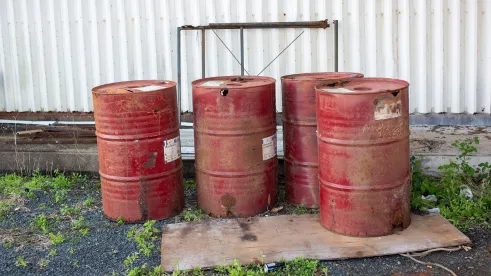Under the Reports Consolidation Act of 2000, each agency’s inspector general must prepare an annual statement summarizing what the inspector general considers to be “the most serious management and performance challenges facing the agency” and to assess briefly the agency’s progress in addressing those challenges. On November 29, 2022, the U.S. Environmental Protection Agency (EPA) Office of Inspector General (OIG) released its report regarding EPA’s fiscal year (FY) 2023 top management challenges. According to the report, the eight top management challenges for EPA in FY 2023 include:
-
Providing for the Safe Use of Chemicals: The public must be able to depend on the EPA’s ability to conduct credible and timely assessments of the risks posed by pesticides, toxic chemicals, and other environmental chemicals.
OIG states in its full report that it conducted an evaluation in 2020 of EPA’s progress toward meeting deadlines established by the Toxic Substances Control Act (TSCA) as amended by the Frank R. Lautenberg Chemical Safety for the 21st Century Act (Lautenberg Act), focusing primarily on TSCA’s existing chemicals program. OIG recommended that the Office of Chemical Safety and Pollution Prevention (OCSPP) assistant administrator publish the annual existing chemicals plan, including the anticipated implementation efforts and required resources; conduct a workforce analysis to assess the Office of Pollution Prevention and Toxics’ (OPPT) capability to implement TSCA; and specify what skill gaps had to be filled in FY 2021 to meet the TSCA requirements. According to OIG, on February 7, 2022, OCSPP certified that it had completed all corrective actions for the recommendations in its report. More information on OIG’s 2020 report is available in our August 18, 2020, blog item.
OIG notes that an audit of TSCA’s New Chemicals Review Process is currently ongoing as part of its FY 2022 Oversight Plan. According to OIG, the objective of that review is to determine the extent to which EPA is using and complying with applicable records-management and quality-assurance requirements and employee performance standards to review and approve new chemicals under TSCA to manage human health and environmental risks.
According to OIG, per EPA, “an increased workload and the need for resources -- especially staff trained in specific science skills -- are major factors in not being on track to meet many of the EPA’s statutory deadlines.” Citing a trade press article, OIG states that “[s]pecifically, the OCSPP stated that it does not have the resources to address statutory requirements. The OCSPP also stated that it has not received the necessary funding to complete its mission.” For example, OCSPP reports that it has approximately 310 full-time equivalent staff but estimates that it needs about 500 full-time equivalents for its mission. EPA also cited a lack of resources for its failure to post publicly the risk reports for 1,240 new chemicals.
In FY 2022, EPA requested an additional $15 million and 87.6 full-time equivalents -- a 35 percent increase from the FY 2021 enacted full-time equivalent level -- to meet the increased responsibilities from the Lautenberg Act. The FY 2022 enacted budget provided for 25.6 full-time equivalents for TSCA programs, however. Furthermore, according to OIG, OCSPP conducted a recent assessment that recommended that the office hire more staff, mitigate the workload to manage the workforce’s daily stress, modernize information technology (IT) systems, and eliminate the use of multiple tracking systems.
OIG concludes that many of the Biden Administration’s top priorities rely on the work of the OCSPP. Both EPA OIG and EPA have noted that key OCSPP programs face a steep staffing shortage and a lack of planning that could negatively impact critical chemical work, however. Absent the resources OCSPP needs for its TSCA programs, EPA “will remain challenged with meeting its statutory deadlines.” OIG states that if OCSPP is unable to balance the workload with its resource needs, EPA “will continue to face the key challenge of ensuring the safety of chemicals.”




 />i
/>i

